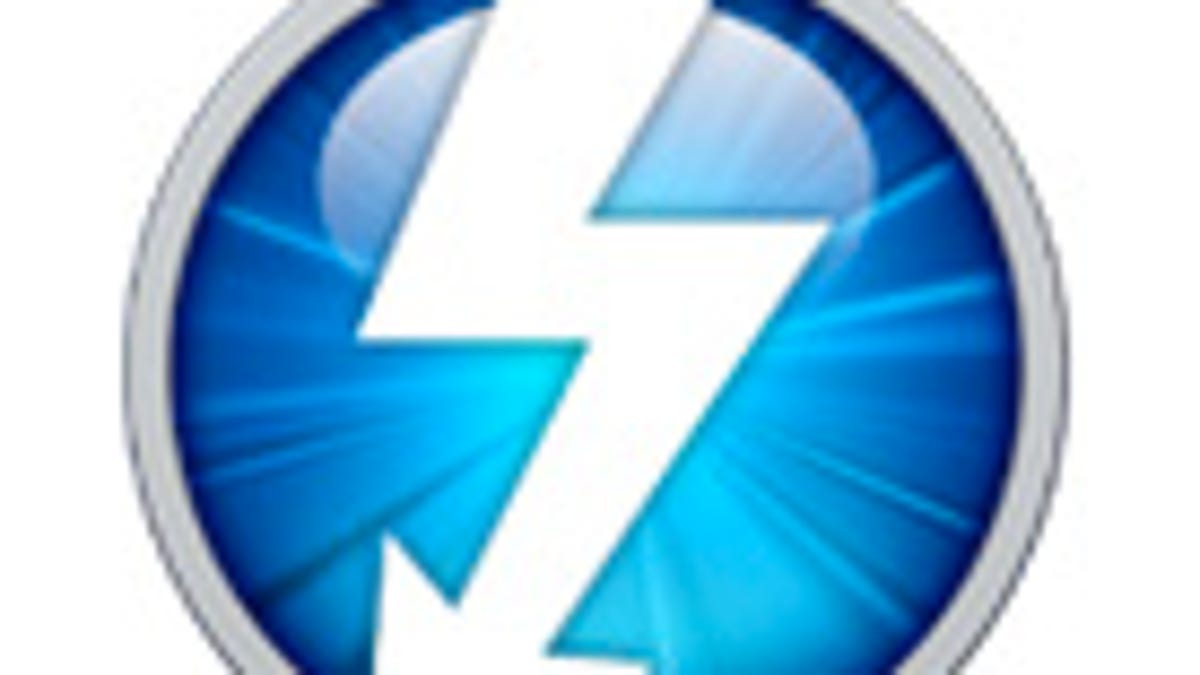Apple's Thunderbolt potential increases with new adapters
Apple's Thunderbolt technology has great potential both for speed and configuration, which has been exemplified with the release of new adapters from Sonnet technologies.

Some of the frustrations that Mac users have had with Apple's hardware developments over the years have been when Apple has limited various connectivity options. For instance, when Apple removed FireWire ports from some of its portable systems, users were concerned about options for Target Disk mode (commonly used for troubleshooting), or even connecting numerous FireWire devices to the systems. More recently, Apple has juggled between including an ExpressCard slot and an SD card reader on newer laptop systems.
As systems get smaller and thinner, the ability for Apple to accommodate various ports will undoubtedly decrease. As it stands, the relatively large Ethernet and FireWire 800 ports are very snugly crammed on the sides of Apple's laptops, and if the systems get much thinner, it will be much more difficult for Apple to include these ports. Apple had to come up with some creative solutions for the MacBook Air with the USB Ethernet adapter; with the next round of laptops rumored to be even thinner, the ports will become a major hindering factor. Built-in technologies like Wi-Fi and Bluetooth cover a fair amount of connectivity, but if you need something more specialized, then these may not suffice.
The reason for users' concern when Apple has removed ports in the past was not so much the lack of the ports, but that there were no alternatives for those who needed them. Even when Apple implemented DisplayPort in 2009, the availability of adapters minimized the concern for people who had DVI, VGA, and HDMI devices that they wished to connect, though before these adapters were available there were many people complaining about the inability to use their systems with their external monitors, projectors, and televisions.
While the concerns over the lack of specific ports will always happen, in Apple's current and future systems these concerns will be a thing of the past, thanks to Apple's adoption of Thunderbolt across its entire line of Macs.
Thunderbolt is an I/O solution that offers connectivity to the system's PCI-express bus, and therefore offers the option to add numerous peripheral devices to the system that were not previously possible via USB and FireWire ports. For instance, with Thunderbolt you can have a high-speed RAID system, seen in the Pegasus line of storage controllers, or even theoretically have a bank of graphics cards in a separate enclosure. In essence, any device or expansion card that can be attached to the PCI-express bus should be able to connect through the Thunderbolt connection (albeit with limited capability for some high-performance cards).
This means that if your system is lacking a specific connection option, with Thunderbolt you should be able to quickly add that option to your system using a device that utilizes PCI-express technology. It turns out that ExpressCard expansion cards are based on PCI-express technology, and therefore the ability to bridge an ExpressCard device to Thunderbolt should be quite feasible. Recently, Sonnet technologies has taken advantage of this with its new Echo ExpressCard/34 adapter that does exactly this, and allows any Thunderbolt-equipped Mac to take advantage of practically any ExpressCard solution out there. Compatible ExpressCards include those that offer I/O options such as Wi-Fi, Bluetooth, Ethernet, FireWire, USB 2, USB 3, eSATA, and more.
This adapter exemplifies the versatility of Thunderbolt, and also shows the potential it brings to Apple's systems both now as well as in the future. Currently Thunderbolt runs at 10Gbps speeds, but this is an artificial truncation of the technology's true speed of up to 100Gbps that should be implemented as connectivity options are refined in the upcoming years. This means that while currently some high-performance options like graphics cards may be limited in performance if piped through a Thunderbolt interface, sooner or later they may be a more feasible option. Currently PCI-express speeds top out at 128Gbps, which is not much faster than Thunderbolt's 100Gbps maximum capability.
Given the current versatility of Thunderbolt and its potential for speed expansions with Sonnet's adapter, what this means is that even if Apple were to offer a system with a single Thunderbolt connection, you would still be able to add the I/O configuration of your choice. As Thunderbolt's speed increases, the options will increase to even offering the potential for clustering systems. Apple currently develops its "Xgrid" clustering technology, but just imagine being able to create an ad-hoc supercomputer by daisy-chaining multiple systems together with Thunderbolt, or having a portable system like an iPad that could dock to a bank of graphics cards and I/O cards that would morph it into a fully capable desktop system.
While some of these ideas may be speculation and fun thinking for now, the potential for such connectivity is not out of reach, and may define part of the future for Macs. We will have to wait and see whether such ideas will make it into Macs or other Apple products. Meanwhile, devices like Sonnet's adapter will bring new connection possibilities to those who are missing them on their systems.
Questions? Comments? Have a fix? Post them below or e-mail us!
Be sure to check us out on Twitter and the CNET Mac forums.

